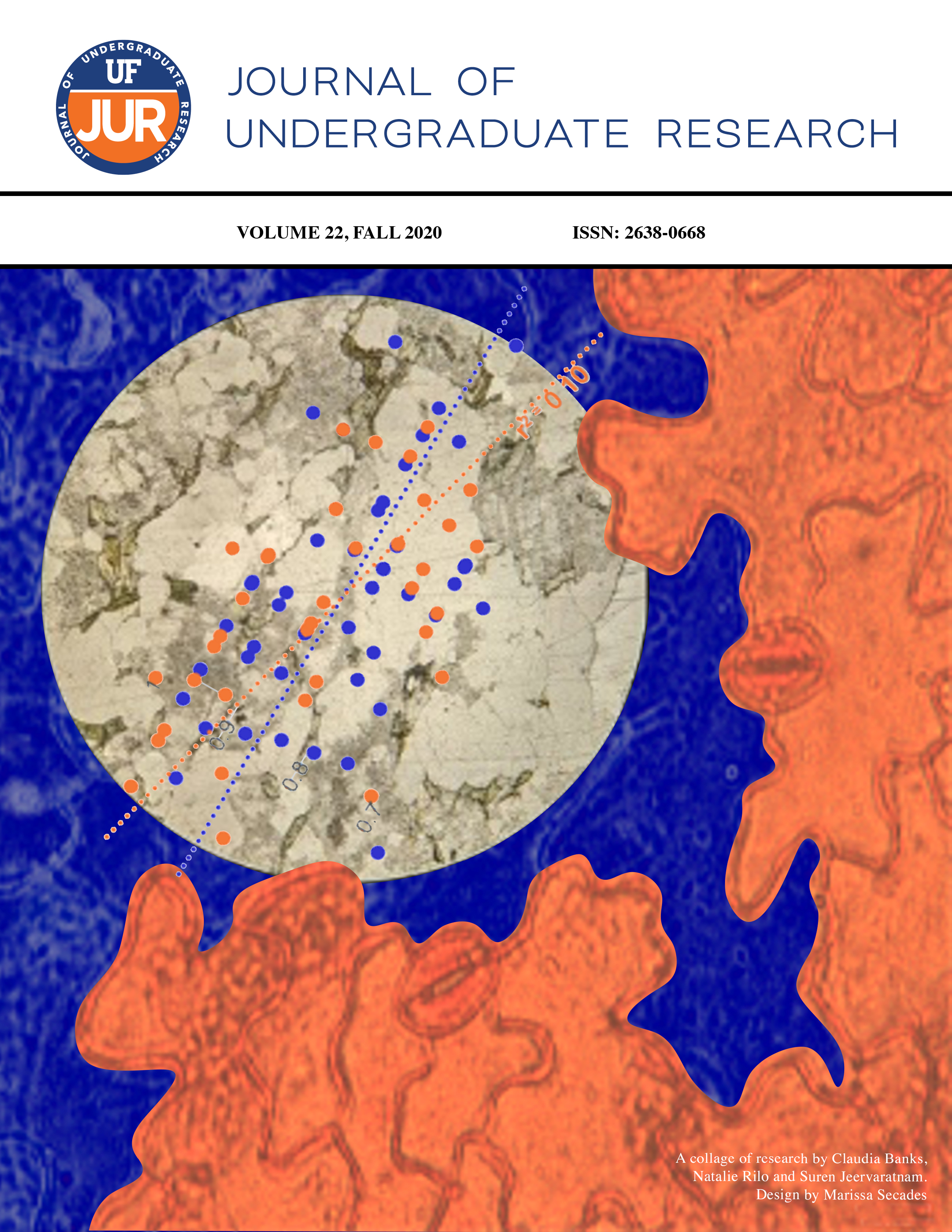Emotional Facial Expression Perception and Processing in AUD Subgroups
A Behavioral and Electroencephalographic Investigation of Polysubstance Use
DOI:
https://doi.org/10.32473/ufjur.v22i0.120248Keywords:
Alcohol Use Disorder, polysubstance use, emotional processing, affect, emotional facial expressionAbstract
Deficits in emotion processing among individuals with AUD are well accepted, however the potential impact of polysubstance use in this population remains uninvestigated. The current work begins to fill this gap by analyzing affective perception and processing in community controls (CCs) and two AUD subgroups differentiated by presence (Alc-Drug) or absence (Alc-Only) of polysubstance use. Behavioral task performance and electroencephalographic (EEG) indices (N170, P3) were measured for an emotion judgement task where participants classified emotional facial expressions (EFEs) morphed to 65 or 95 percent intensity. Mixed model analyses detected deficits in emotion classification accuracy among Alc-Drug relative to other groups. Although there was a main effect of emotion (greater accuracy for positive vs. negative emotions), there was no group by emotion interaction. N170 amplitude analyses found only a main effect for emotion (greater amplitude for negative vs. positive emotions). P3 amplitude analyses detected differences between control and AUD individuals, but no difference between AUD subgroups. No correlation was found between accuracy and ERP amplitudes. These findings contribute to the developing literature on emotional processing deficits in AUD, including highlighting the importance of considering polysubstance use in characterizing these deficits.
Downloads
Published
Issue
Section
License
Some journals stipulate that submitted articles cannot be under consideration for publication or published in another journal. The student-author and mentor have the option of determining which journal the paper will be submitted to first. UF JUR accepts papers that have been published in other journals or might be published in the future. It is the responsibility of the student-author and mentor to determine whether another journal will accept a paper that has been published in UF JUR.

